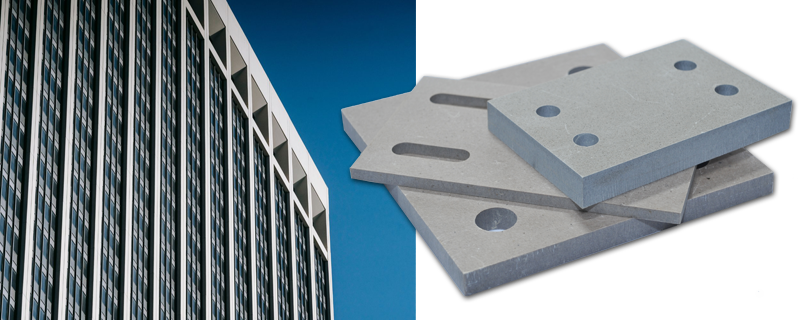Farrat’s Commercial Manager for STRUKTRA® Chris Lister  discusses the role of structural thermal breaks in facades
discusses the role of structural thermal breaks in facades
“It is already understood in the industry that facades serve multiple functions in the building envelope, making the integration of thermal breaks crucial for several reasons including- enhanced energy performance maintaining the integrity of the thermal envelope, controlling condensation and fulfilling fire performance criteria. All whilst offering architectural flexibility, contributing to sustainability targets and meeting the required building codes and standards.”
“Building facades are a complex part of any building construction. The assured thermal, structural and fire performance of components within this highly visible and exposed element is critical to the safety and longevity of any project.”
Farrat, a UK engineering company, were established in 1959 and have a pedigree in R&D developing new solutions designed to control both vibration and thermal energy for designers, specifiers and contractors. Their work on improving the performance of structural thermal breaks has recently been studied by both the Fraunhofer Institute for Building Physics IBP and the University of Salford resulting in reports available online in the Farrat Knowledge-Hub.
Chris Lister continues
“We commissioned research at the Fraunhofer IBP (Test report P7-081e-1/2023 Calculation of the Point Thermal Transmittance and the Temperature Factor of Steel Structure Connections.) which can be downloaded in full via our website. Plus, a 4-year PhD project was conducted both on-site and at the “Energy House” located at the University of Salford in Manchester, United Kingdom. Using a specialist temperature and climate-controlled building to conduct full-scale testing of a typical steel-to-steel connection passing through the building envelope.”
“As a result of over 15 years of research including commissioned independent studies at scale, 3D thermal modelling and a PhD project we can confidently conclude that our STRUKTRA® connections perform equally or better thermally than alternative solutions making it the best performing thermal break both structurally and thermally in the market. We provide architects, designers and contractors with 3 easy steps to take when controlling thermal transfer effectively in facades.”
Step 1.
Narrower connections reduce both material and costs: many solutions on the market require you to design connections larger than necessary (both the length, width and thickness of the steel end plates). This creates an unnecessary increase in the size of the connection and more material required. Instead, check to see if you can map the same or better static performance (i.e. compressive strength, rotational stiffness) with a more compact thermal break. In many cases, the thickness of the connection can be reduced from 80mm or 120mm down to 25mm using STRUKTRA®.
Step 2.
Easy and efficient design: Often cumbersome design processes or external planning tools are necessary to design thermal separations in load-bearing connections. This costs important time. STRUKTRA® can be integrated into all common Euro Code 3 connections without the need for special design tools. This simplifies the process and saves you valuable time.
Step 3.
Superior and certified materials: the thermal breaks in load-bearing connections must withstand the highest loads and reliably deliver their thermal insulation performance. Therefore, look for certifications and quality seals, such as the ETA CE mark or Passivhaus. In addition, research any available studies that have been conducted by independent organisations.
Mr. Lister closes with a clear message.
“Remember if it’s not certified, it’s not the right product.”
Please click here to visit the Farrat Website
![]()



 discusses the role of structural thermal breaks in facades
discusses the role of structural thermal breaks in facades

Leave a Reply
Want to join the discussion?Feel free to contribute!